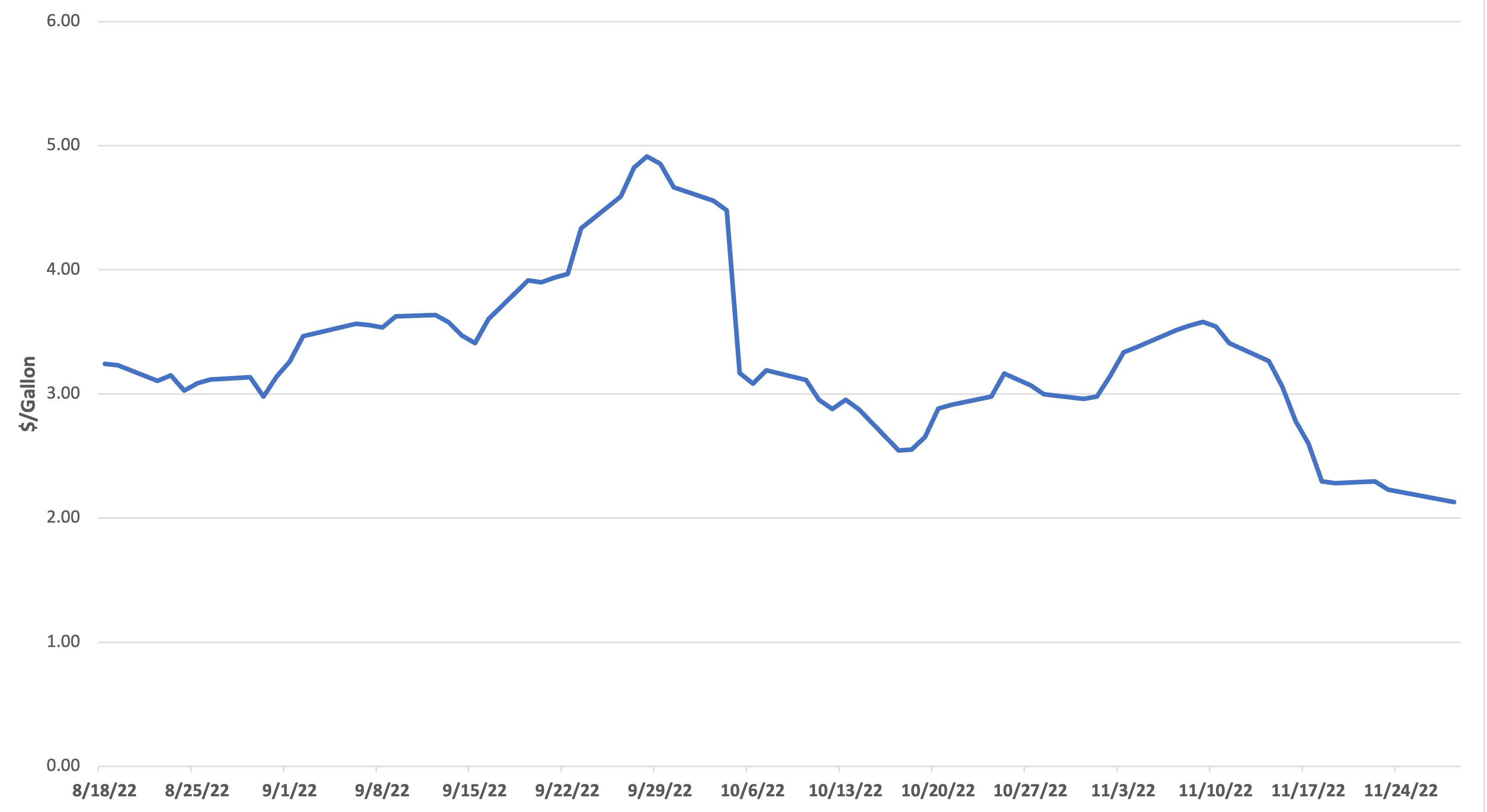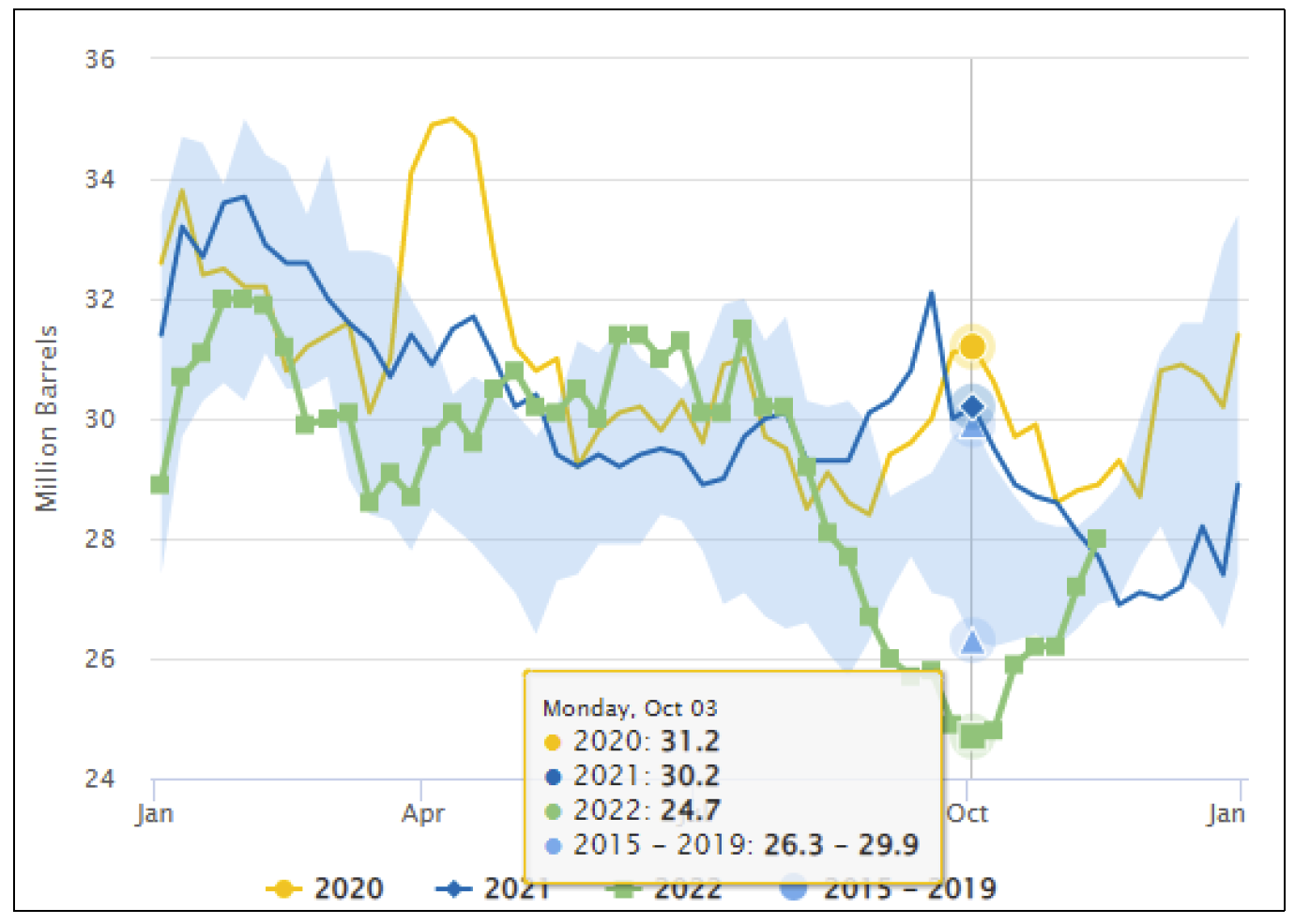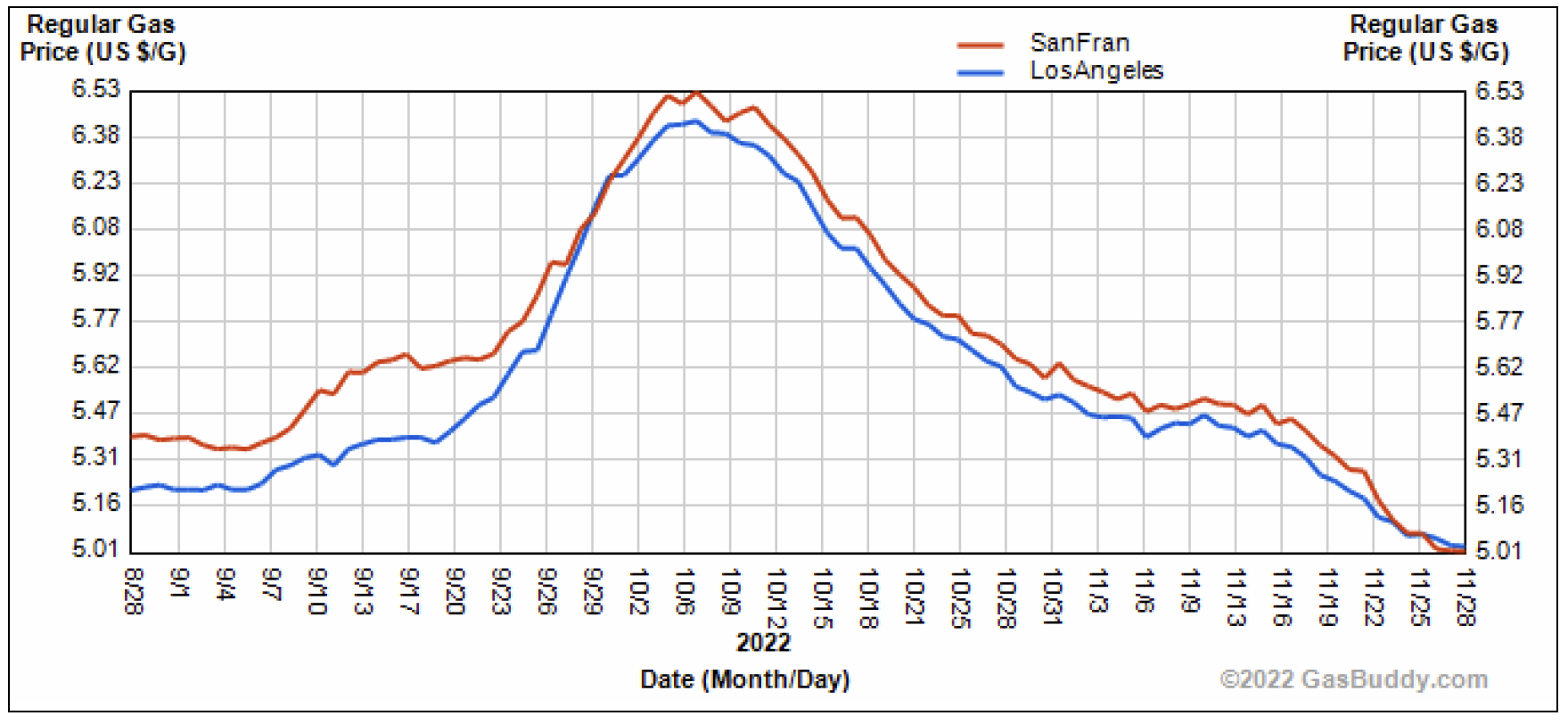Gasoline Price Spikes: What happened when winter came early?
Link to article: https://stillwaterassociates.com/gasoline-price-spikes-what-happened-when-winter-came-early/
November 28, 2022
by Dave Hackett
Gasoline prices soared in California in September until the Governor declared that winter had arrived a month early on Friday afternoon, September 30th. We wrote about the cause of the rise in prices, and have been watching the situation ever since. So, what happened next?
First, the California Air Resources Board (CARB) gave approval for winter gasoline blending season to start right away (instead of November 1); and the Kinder Morgan Pipeline, the common carrier who distributes much of the gasoline in the state, published its plan for the transition.
Winterized gasoline has a higher volatility than summer gasoline. Refiners increase gasoline volatility by blending in butane. Putting comparatively cheap butane into the blend increases the amount of gasoline that can be produced by at least 5-10% vs. summer blend. This increase in gasoline production was enough to pop the spot price bubble, which tumbled $1.63 per gallon within the week after the governor’s announcement. As of Monday, November 28th, spot prices had dropped by $2.69 per gallon.
Figure 1. Spot Los Angeles CARBOB Regular

Source: OPIS
Several refineries also finished maintenance in October, bringing additional gasoline production back online, and imported cargoes began to arrive, contributing to the relief of the supply constraints. As such, gasoline inventories began to rebuild.
Figure 2. PADD 5 Gasoline Inventory

Source: EIA
It’s all well and good that the spot prices dropped, but what happened to retail prices? According to our friends at GasBuddy, retail prices fell about $1.00 per gallon in the first month from the peak on October 6th and are off about $1.40 in both LA and San Francisco by November 28.
Figure 3. Three-Month Average Retail Price

Retail prices typically come down more slowly than spot prices, a well-documented phenomenon called “Rockets & Feathers”.
How much did the early arrival of winter save consumers? In our September 29th article, we said that reducing the cost a dollar a gallon would save consumers a billion dollars per month. That’s true if prices were to fall immediately on October 1, but it took the whole month for that to happen. Early winter, as it turns out, was probably responsible for half a billion dollars in consumer savings.
So what’s next? In the last week, spot prices have continued to crumble, and retail prices will follow. Several refiners postponed maintenance that was scheduled for October into the first quarter. That, coupled with already planned maintenance, probably means a tight supply market into the spring, when first quarter work is wrapped up ahead of the driving season. And a tight supply market can be expected to support fairly elevated spot prices through winter. However, retail prices will continue down perhaps another 50 cents to a dollar per gallon, assuming crude oil prices are stable.
